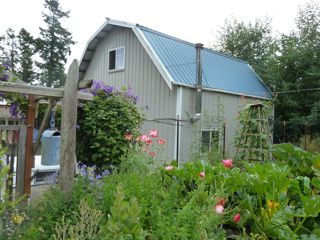Art quilts/wall quilts are a different kettle of fish. Storage methods often depend on things like the type or amount of surface embellishment and the over-all size of the quilt.
All quilts, regardless of size or embellishment need to be stored away from direct light, in a dry, odor free place. Small quilts, ones that are 2 feet by 2 feet or less, can be stored flat between layers of archival tissue paper in a drawer, box or on a shelf. Most of my quilts are around four to five feet long/tall, so I go with the pool noodle school of storage.
 I lay the quilt to be stored out on a table, look it over for any loose threads, or foreign objects that shouldn't be there, like an overlooked pin that could rust or snag something.
I lay the quilt to be stored out on a table, look it over for any loose threads, or foreign objects that shouldn't be there, like an overlooked pin that could rust or snag something.  |
| Quilt face covered with tissue paper. |
 Then I cover the quilt top with layers of archival tissue paper. Archival paper is more expensive than regular tissue paper, but especially if your quilt is going to be stored long term, it is worth the price.
Then I cover the quilt top with layers of archival tissue paper. Archival paper is more expensive than regular tissue paper, but especially if your quilt is going to be stored long term, it is worth the price.I like to roll my quilts on swim noodles. The swim noodles keep the quilt from compressing and creating fold lines. Also, I can stand the quilt on end without the quilt itself touching the floor. I keep my eyes peeled for deals on swim noodles, especially at the end of summer. This fall Joann's Fabrics had a bunch of swim noodles for $1 each, so I stocked up.
Some people insist the quilt be rolled with the backing facing in. Their rationale is that the quilt will then naturally curl toward the back, and therefore hang flatter on the wall. I always feel it makes the quilt top more vulnerable to abrasion, dust or some other disaster, so I want the part I worked on for months to be as protected as possible. In my mind, that means rolling the quilt so the top is facing in and the backing is facing out.
 To keep the quilt secured on the swim noodle, I use strips of bridal tulle to lightly tie the roll closed. the tulle stretches a bit, so it holds things in place, but doesn't dent the fabric.
To keep the quilt secured on the swim noodle, I use strips of bridal tulle to lightly tie the roll closed. the tulle stretches a bit, so it holds things in place, but doesn't dent the fabric.Then when everything is trussed up nice and snug, I slip the quilt into a cotton sack with draw strings. I have made some of these sacks from muslin, but most often, I repurpose old pillow cases. There's a part of me that says a plastic bag would be better protection against disasters like rising sea levels and broken pipes, but everything I've read says plastic isn't such a good idea.

I have 4 quilts stored in this one bag, which is really too many, because the quilts are tightly packed. It'd be better if I only had one or two quilts per bag. Some how, making bags isn't as appealing to me as making a quilt, so I end up jamming too many into one bag.
When I ship quilts to quilt shows, I use this same method, and then put the bag with the quilt in a mailing tube, if possible, or a long skinny box, that I sometimes have to manufacture from a larger box with lots of packing tape.
















